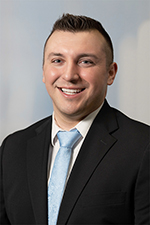From Theory to Practice: Implementing Machine Learning Solutions Safely and Effectively in the Clinical Laboratory
Artificial intelligence (AI) applications are becoming commonplace in research literature but realizing their potential for clinical and operational improvements requires real-world implementation. Safe and effective AI use in the clinical laboratory requires extensive validation efforts, robust implementation strategies, and comprehensive monitoring infrastructures. In this presentation, we will provide a high-level overview of the key considerations for each of these steps. Geared towards the laboratorian, we hope to provide participants with the fundamental background they would need to engage in discussions with technical staff when advancing AI solutions within their laboratories.
Originally published on March 4, 2025
Lecture Presenter
 | Nicholas C. Spies, MD Assistant Professor (Clinical) |
Dr. Nicholas C. Spies is medical director of Applied Artificial Intelligence and Clinical Chemistry at ARUP Laboratories and an assistant professor (clinical) at the University of Utah School of Medicine. He received his medical degree from Washington University School of Medicine where he also completed a clinical pathology residency and an internship in obstetrics and gynecology. Dr. Spies is board certified in clinical pathology. He is affiliated with the Association for Diagnostics and Laboratory Medicine, the Association for Pathology Informatics, the Academy of Clinical Laboratory Physicians and Scientists, and the College of American Pathologists. His research interests include quality assurance and error detection and analytics and artificial intelligence.
Objectives
After this presentation, participants will be able to:
- Define key roles and responsibilities in the machine learning life cycle
- Explore techniques for validating, deploying, and monitoring models
- Reinforce these concepts within a relevant, lab-based example
Sponsored by:
University of Utah School of Medicine, Department of Pathology, and ARUP Laboratories
 Site Search
Site Search






